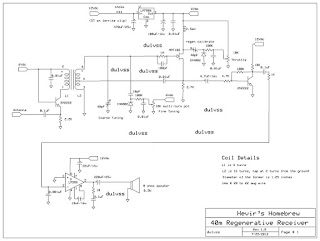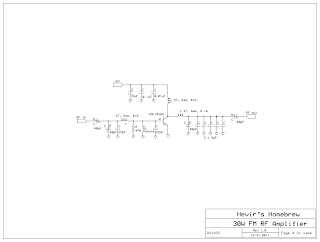This project was realized for the need of boosting the rf signal of an ordinary FM modulator . Most of these FM modulators available on the market have an rf output of less than 5mW in which effective range was very limited. The circuit above contains several rf stages combined together in a 2"x 2" double sided PCB board. The two rf transistors namely 2N2222 and 2SC2053 do not need heat sink except for the 2SC1971 final rf transistor. There are two supplies required to operate this amplifier, the Vcontrol and the Vcc. The Vcontrol is designed to directly control the rf output of this amplifier therefore it should be adjustable from 6V to 12V. You may include a variable regulator like 317 but I have used the 7805 configured to be adjustable for the Vcontrol section. The Vcc is normally at 12V and at least 3 amperes. You can use 13.8V as well but be reminded that this will force the 2SC1971 to operate at a higher power output and will greatly increase the junction temperature and for safety reason 12V is recommended. Before tuning this amplifier, rotate all the trimmer capacitors to a 50% mesh position and set the Vcontrol at 11V. Set the FM modulator at the center of the broadcast band which in this case at 98MHz. Tuning process starts from the two trimmer capacitors found at the output section of the 2SC1971. Use a 50 Ohm dummy load together with a power meter and adjust these trimmers for a peak power then you may follow the other two trimmer capacitors located at the input section. Repeat this process few times until the rf output maximize. Double check the rf output at 88MHz and note the rf power, do the same at 108MHz.
The rf power output of this amplifier should give you a fair broadband characteristic and power level across the broadcast band should not drop too low. Note that you may reach 8W for the maximum power but this will put to much stress to our 2SC1971. You may now reduce the voltage at the Vcontrol to a lower value depending on your power level requirements. ---73 de hevir






















